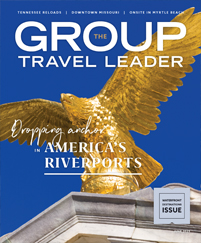How can you make travel easier in a world where everything has become harder?
One of the interesting things about the group tourism industry is that its value proposition is multifaceted. What attracts one customer to a group trip can be quite different from what attracts another customer, even if they both end up traveling on the same motorcoach.
For many years, tours were marketed with two main selling points: First, they made traveling accessible and approachable for people who didn’t have much travel experience; and second, they offered the opportunity for semi-inclusive or all-inclusive travel at low prices. Those value propositions never completely went away, but they did fade in importance over time. Giant leaps forward in transportation infrastructure made travel accessible to many individuals and families. And the explosion in e-commerce and online travel booking has enabled intrepid consumers to shop for low-cost travel on their own. A determined online shopper can now match or perhaps even beat the pricing of a typical group tour.
As those societal factors changed, a new model for tourism promotion emerged in the 1990s and has flourished over the past 30 years. Instead of highlighting the ease and affordability of group tours, savvy marketers began selling the social aspect of tourism. Group tours weren’t just an opportunity to take a trip; they were opportunities to make memories with old friends and build new friendships with like-minded travelers. Group travel builds community in a way that individual travel can’t.
In addition to community, group travel sellers also found success in exclusivity. Tour companies began working with destinations and suppliers to offer benefits, activities and experiences that aren’t available to the general public. In the years before the pandemic, we and other thought leaders in the industry frequently encouraged travel planners to lean into this trend.
Now, as the world emerges from the most disruptive period since World War II, the tourism industry finds itself needing to shift its messaging again. With inflation near record levels, we can’t promise anyone we can save them money. With workforce problems and supply chain issues, we can’t even promise customers we’ll be able to deliver the high levels of service to which they’re accustomed.
Here’s what you can do, though: You can help people find ways to travel in the midst of challenging circumstances.
Although the pandemic seems to be receding, its impact on tourism is still making waves. Prices are unpredictable. Demand is soaring. And for individual travelers, it can still be difficult to navigate business closures, public policies and all the uncertainty swirling in the air.
That’s where you can offer real value in 2022, 2023 and beyond. You can work in advance to build itineraries, secure hotel rooms, reserve restaurant space and lock down all the other details that are difficult to manage. You can figure out testing protocols and vaccine requirements. You can’t predict the future, but you can do things to take the guesswork out of your customers’ trips.
Traveling presents more than its share of challenges now, and those may continue for some time. But if you’re willing to take those challenges head on, you can remove barriers for your travelers and run successful trips again.
In a world where everything has become hard, you can find ways to make travel easier.












